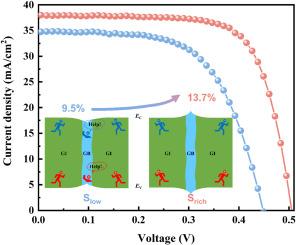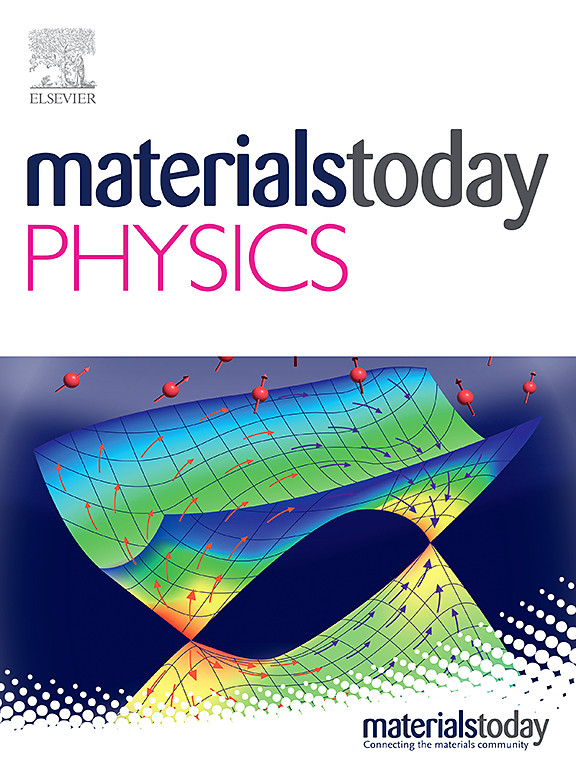Reversing band bending at grain boundaries enables high-efficiency Cu2ZnSn(S,Se)4 solar cells
IF 10
2区 材料科学
Q1 MATERIALS SCIENCE, MULTIDISCIPLINARY
引用次数: 0
Abstract
Kesterite solar cells show great potential for sustainable photovoltaic technology, attributed to their excellent semiconductor properties and earth abundant composition. However, undesirable band bending at the grain boundaries (GBs) in Cu2ZnSn(S,Se)4 (CZTSSe) films induces serious carrier recombination because of inhomogeneous distribution of S and Se in the grain interiors (GIs) and at GBs, which results in large open-circuit voltage deficit and overall poor performance of CZTSSe solar cells. Here, a robust hydrothermal sulfurization design has successfully inverted the band bending at the GBs, with advanced cathodoluminescence measurement confirming the transition of carrier collection pathways from the GBs to the GIs, thereby achieving efficient carrier collection within the GIs. Simultaneously, this design has effectively passivated the non-radiative recombination in the GIs, smoothing the way for carrier collection. Ultimately, a 13.7 % efficiency CZTSSe solar cell with 44 % improvement is realized by this process. This study discloses that reversing the band bending at GBs is practical to tailor the carrier collection, and thus pave the pathway for high-efficient photoelectronic devices.


扭转晶界带弯曲实现高效 Cu2ZnSn(S,Se)4 太阳能电池
钾长石太阳能电池因其优异的半导体特性和丰富的地球成分而在可持续光伏技术方面展现出巨大潜力。然而,在 Cu2ZnSn(S,Se)4(CZTSSe)薄膜的晶界(GBs)处,由于 S 和 Se 在晶粒内部(GIs)和晶界(GBs)处的分布不均匀,不理想的带弯曲诱发了严重的载流子重组,从而导致 CZTSSe 太阳能电池的开路电压严重不足,整体性能低下。在这里,一种稳健的水热硫化设计成功地逆转了 GBs 的带弯曲,先进的阴极发光测量证实了载流子收集途径从 GBs 到 GIs 的转变,从而实现了 GIs 内载流子的高效收集。同时,这种设计还有效地钝化了 GIs 中的非辐射重组,为载流子收集铺平了道路。通过这一工艺,最终实现了效率为 13.7% 的 CZTSSe 太阳能电池,并提高了 44%。这项研究揭示了在 GB 处反转带弯曲来定制载流子收集是切实可行的,从而为高效光电子器件铺平了道路。
本文章由计算机程序翻译,如有差异,请以英文原文为准。
求助全文
约1分钟内获得全文
求助全文
来源期刊

Materials Today Physics
Materials Science-General Materials Science
CiteScore
14.00
自引率
7.80%
发文量
284
审稿时长
15 days
期刊介绍:
Materials Today Physics is a multi-disciplinary journal focused on the physics of materials, encompassing both the physical properties and materials synthesis. Operating at the interface of physics and materials science, this journal covers one of the largest and most dynamic fields within physical science. The forefront research in materials physics is driving advancements in new materials, uncovering new physics, and fostering novel applications at an unprecedented pace.
 求助内容:
求助内容: 应助结果提醒方式:
应助结果提醒方式:


